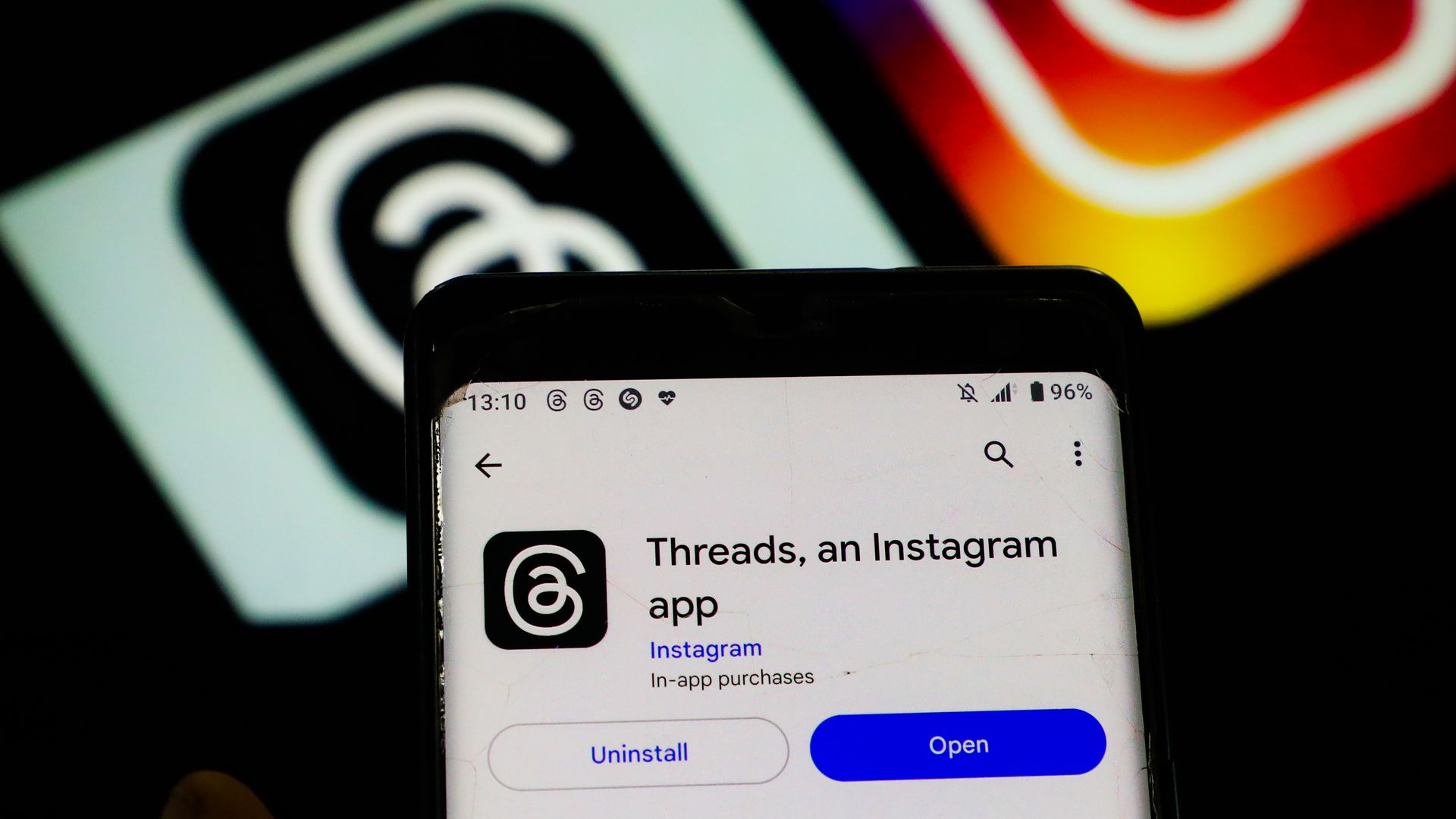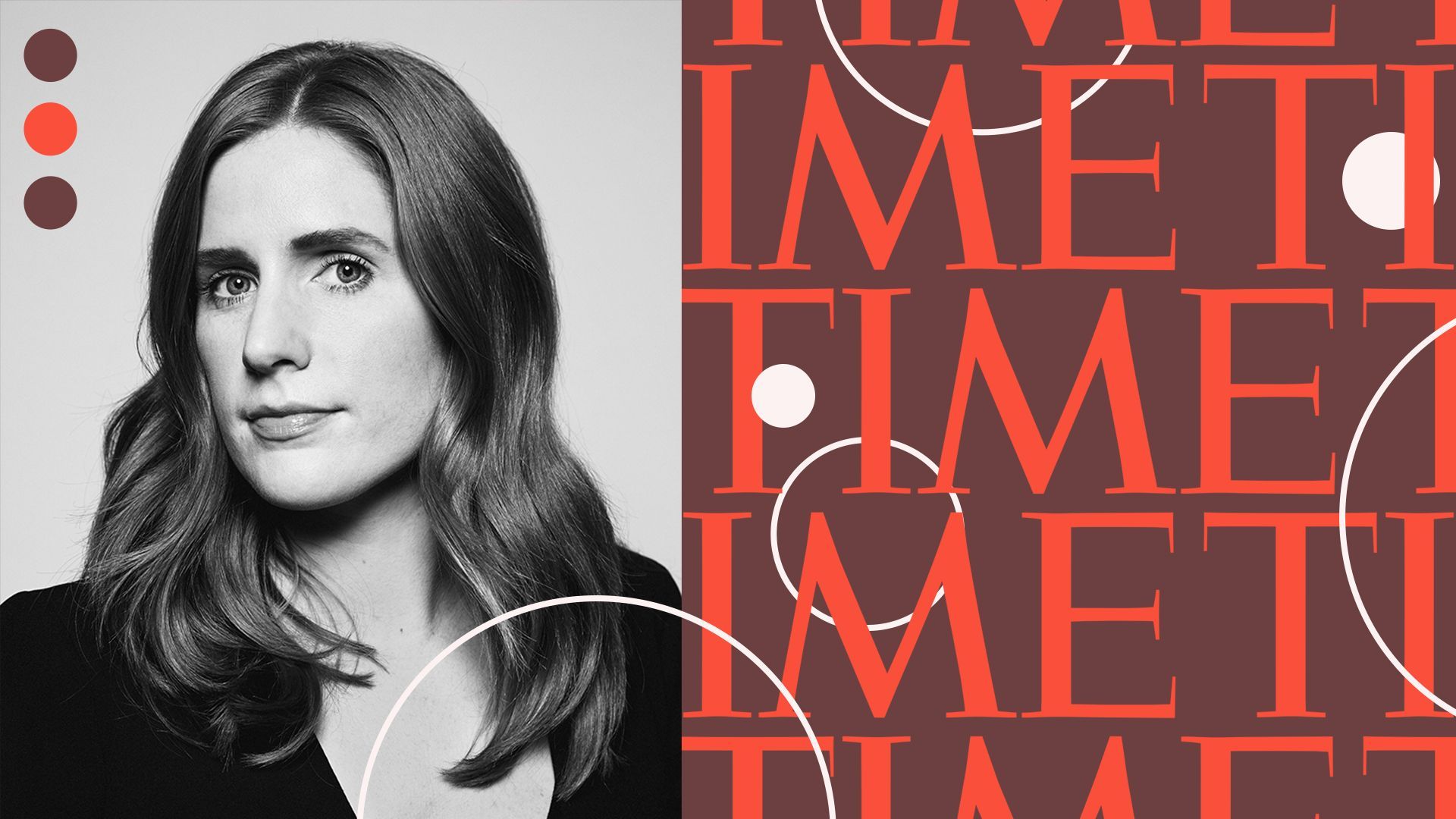July 13, 2023
Welcome back!
- 🎊 Later this month, Axios Communicators will hit the one-year mark. What's been your favorite story or topic thus far? What would you like to see more — or less — of? Let us know.
Today's newsletter is 1,341 words, a 5-minute read.
1 big thing: Future of branded content on Threads

Photo: Thilina Kaluthotage/NurPhoto via Getty Images
Instagram is planning to bring its branded content tools to Threads, giving marketers a way to get involved with paid promotion on the app while advertising is still off limits, Axios' Sara Fischer and I write.
Why it matters: Companies see a clear advantage in being a first-mover on Threads, but with the rules around paid promotion in flux, it's unclear what the best way is to get involved beyond creating organic posts.
State of play: Instagram's terms of service, which includes guidance around sponsored content, applies to Threads.
- That means brands that work with influencers to post sponsored content are technically required to use Instagram's branded content tools.
- Instagram's branded content tools, which allow companies to add paid partnership labels to their posts, are only made available to eligible brands.
- Instagram's branded content tools aren't currently available on Threads. But a source told Axios that Instagram is working to quickly make them available, which would give marketers an opportunity to begin experimenting with paid promotion, while advertising is still unavailable.
- Threads won't introduce ads until its user base reaches a critical mass, a Meta source told Axios.
- In the interim, the guidance being offered to brands is to clearly disclose any paid partnerships through text or hashtags until Threads gets its branded content tools up and running.
Between the lines: Instagram head Adam Mosseri said Threads will try to avoid courting news and politics content creators, because the topics aren't worth the scrutiny and integrity risks that come along with policing them.
- That could make Threads more of a brand-safe bet for marketers, but it's unclear how the app, which is centered on text-based conversations, plans to remain hyper-relevant without that type of timely content.
- For now, most major companies have already set up accounts on Threads, and many have already begun posting content organically.
Be smart: Threads has not rolled out chronological feeds, which makes real-time announcements from news, sports and local governments less reliable.
- The lack of chronological feeds also presents a risk for corporate accounts and public figures, said Nu Wexler, a former Twitter and Facebook communications executive who now serves as a partner at the strategic communications firm Seven Letter.
"There's a big risk with the algorithmic timeline, because a brand or public person could make a post in the morning, and then a huge industry event could happen two hours later," he said.
- "And if the post is served later that day, it could make them look out of tune with everything else that is going on. That's possible in any algorithmic timeline, but Twitter has [conditioned] users to expect this content to appear more chronologically," says Wexler.
The big picture: The explosive success of Threads has caught the attention of brands looking to experiment with the new app while it's still hot, but social media managers, public figures and journalists are also wrestling with fatigue.
- Without being able to rely on paid promotion, brands and professional creators need to focus more resources on creating buzzy organic posts that can go viral.
- Meshing their Instagram persona with their Twitter persona on Threads can be difficult because it's unclear what Threads' audience wants.
- Twitter refugees might expect pithy observations, while Instagram-natives want visually appealing content.
Bottom line: Right now, it's all about establishing a presence on the platform and using common sense, says Geoff Gates, creative director of social strategy and content at Boathouse marketing agency.
- "Brands should be experimenting [by] engaging with their audience a bit and keeping it light and having fun," Gates said. "Especially in these initial few weeks, the recipe for success is just spending time on it and paying attention to the dialogue and what people are doing on the platform."
2. Be smart: Meta's mimicking game

Threads is a continuation of the company's long-standing "clone and conquer" product strategy, writes Axios' Sara Fischer.
- 🧠 Why it matters to communicators: Most of the time, Meta's copycat experiments have failed, so experts suggest Threading lightly before investing too many resources or upending your social media strategy to accommodate this new platform.
3. Disability Pride Month

Illustration: Brendan Lynch/Axios
More people are self-identifying as having a disability at work, according to the latest Disability Equality Index by Disability:IN and the American Association of People with Disabilities.
Why it matters: If you’re not communicating inclusively, then you aren’t communicating effectively.
State of play: Nearly 1 in 4 Americans have a disability, according to the CDC, and companies are looking to improve their inclusion efforts as more employees self-identify.
- More than 70% of Fortune 100 and roughly half of Fortune 500 companies are actively benchmarking their disability inclusion efforts, according to Disability:IN. That's a 17% increase compared to last year.
Yes, but: It's not enough to implement the right programs — communication and people teams must also share these policies internally and externally with intention.
- A new report by the Institute for Public Relations (IPR) and Voya Financial found that 4 in 10 employees were not familiar with their organization’s position or strategic plan regarding disabilities in the workplace.
- Plus, 53% of employees without disabilities and roughly three-fourths of those with disabilities expressed interest in further education about disabilities.
Between the lines: Disability lies outside the scope of “wokeness” in the minds of many environmental, social and governance (ESG) critics, says Disability:IN.
- "Promoting disability employment is an apolitical position that appeals to liberals who advocate greater social inclusion, as well as conservatives who believe in the power of the private sector," says the report.
What they're saying: These programs and accompanying communication campaigns are good for business, says Paul Gennaro, chief brand and communications officer of Voya Financial.
- "Companies that prioritize inclusion see 28% higher revenue and yield 30% higher economic profit margins than their peers," Gennaro previously told Axios.
Go deeper ... Greater demand for accessible communications.
4. Time names first chief communications officer, Kristin Matzen

Photo illustration: Allie Carl/Axios. Photo: Courtesy of Time
Time named Kristin Matzen as chief communications officer, Axios exclusively learned.
Why it matters: Matzen is the latest in a string of executive leadership changes at the publication and is the first person to hold the CCO title since Time spun off on its own from Meredith Corporation in 2018.
What she's saying: The communications team plays a key role in bringing CEO Jessica Sibley's vision of "Time 3.0" to life.
- "Time 3.0 is really an evolution of the brand by embracing what people love about Time — which is that trusted magazine with the red border — and innovating in new ways that people might not expect," Matzen told Axios.
- "We're doing that by diversifying our revenue in different areas, pushing into new areas of content, expanding our events division and really changing the way that people interact with Time to make it feel like a more modern approach."
📍How she got here: She started her career in publishing, supporting publicity at Simon & Schuster, Penguin Group and eventually Penguin Random House before joining Time in 2017.
🏗 How it's structured: She reports directly to Sibley and oversees corporate communications, media relations, publicity, crisis communications and internal communications for the 315-person company.
🏆 Biggest win: Helping to launch Time's "Women of the Year" package.
- "Our editors went back into the last 100 years and named a woman as Person of the Year for every year that Time did not name women. So it was 100 covers and there was a multimedia element. It was amazing and a really quintessential Time [project] that consumer, trade and industry press were excited to cover."
🍽 Content plate: She's currently watching "The Bear" on FX, reads newsletters like CNN's Reliable Sources and Fortune's BroadSheet and enjoys following Molly McPherson on TikTok.
💡Best advice: If you go to a boss with an issue or a problem, also bring a solution.
- "That advice has been really helpful to me, and it's also been great passing that on to my team because I think that it empowers them to own the stuff they're working on, and they don't have to just hand it over to someone more senior when there's an issue that comes up."
🙏🏻 Thanks (as always!) to editors Nicholas Johnston and Kathie Bozanich for this week's newsletter.
Tell your friends and colleagues to subscribe.